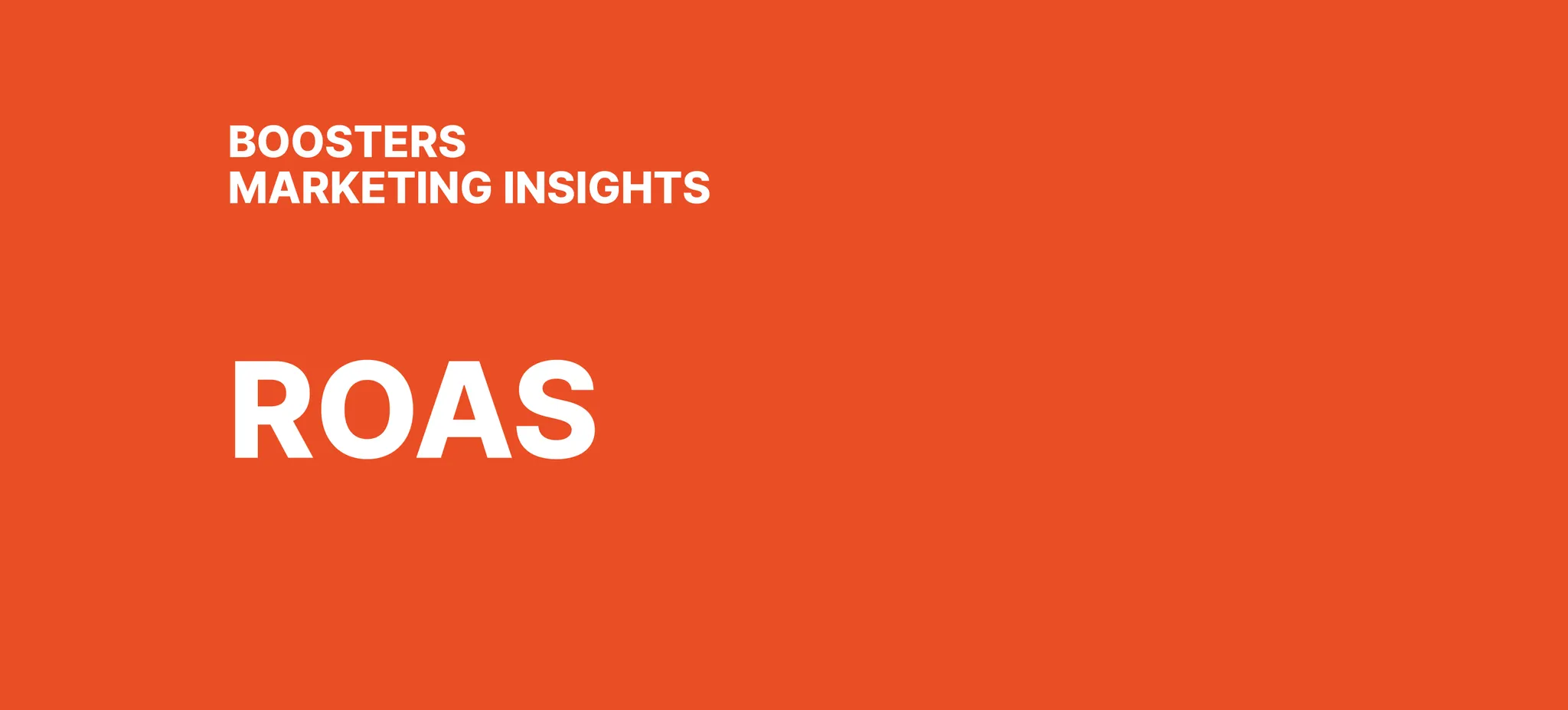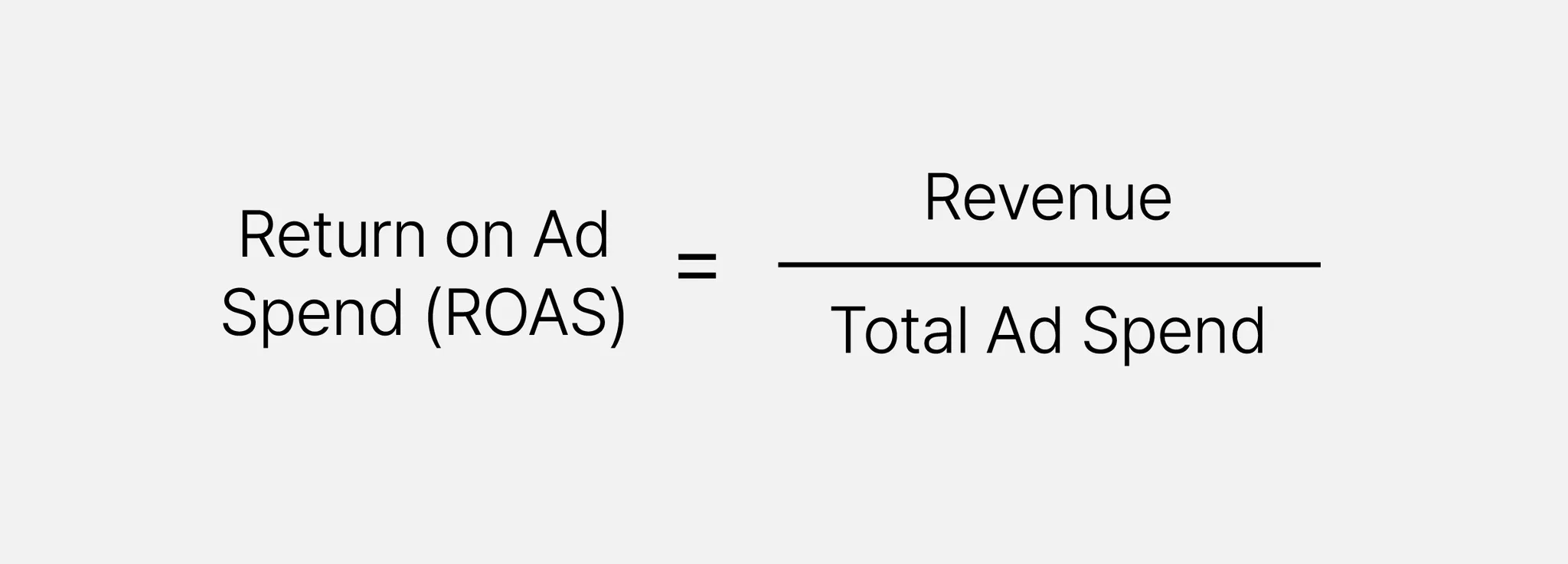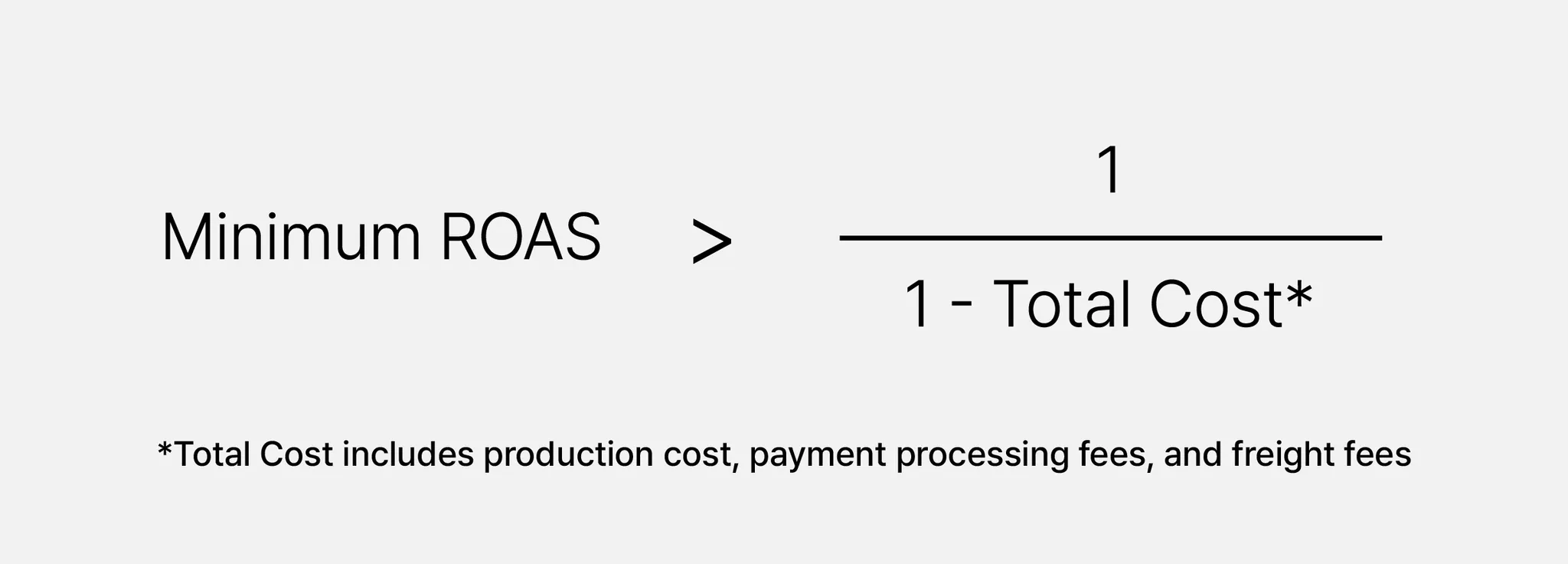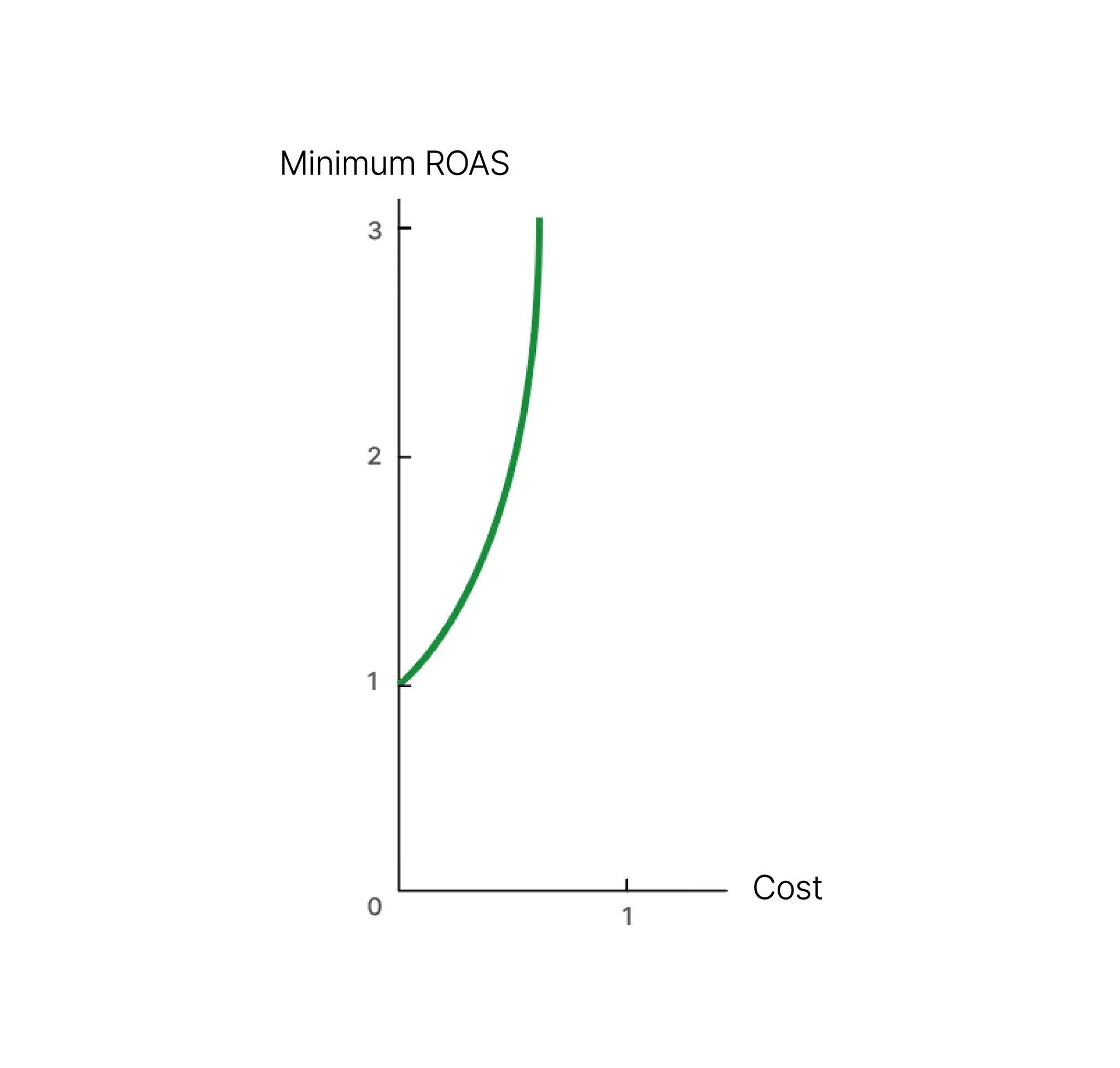 Understanding ROAS
Understanding ROAS
If you're a performance marketer, you're likely familiar with ROAS. ROAS is an abbreviation for 'Return on Ad Spend', a metric that measures revenue earned for every dollar spent on ads.
Marketers focus on ROAS because it helps them determine whether their advertising campaign is profitable. They might be spending too much money on advertisements without making any profit. Therefore, marketers can use ROAS as a key metric to drive brand growth by setting a minimum ROAS goal. But how do we determine the minimum ROAS for a brand?
 How to Calculate ROAS
How to Calculate ROAS
First, let's examine the formula for ROAS (Return on Ad Spend). ROAS is calculated by dividing total revenue by ad spend and then multiplying the result by 100 to get a percentage. Typically, ROAS is higher than 100% because revenue usually exceeds the cost spent on ads. However, a ROAS higher than 100% does not necessarily mean it's acceptable. There are various costs involved in selling a product, not just the cost of advertising. ROAS only reflects the ratio of ad spend to revenue, disregarding other costs. It is recommended to set a minimum ROAS that your brand should achieve to generate a profit margin.
These other costs can include the 'production cost' of making the product, 'payment processing fees' paid to Payment Gateways (PG) for each online transaction, and 'freight fees' paid to the logistics company. If the sum of these costs and the ad expenditure surpasses total revenue, you'll end up with a negative profit margin. Now, let's calculate the minimum ROAS.
For instance, consider a company named 'Boolifornia' that sells orange juice in bulk. They spend 2K dollars on online portal advertisements for 7 days and generate a total revenue of 6K dollars. Here, the Return on Advertising Spend (ROAS) is 300%, calculated as (6K/2K)*100.
A marketer at Boolifornia is considering how to assess a return on ad spend (ROAS) of 300% over the past seven days. To do this, he needs to understand the profit margin generated by the advertisements. He starts gathering necessary information from various departments.
He discovers that the production cost of orange juice is 30% of total revenue, payment processing fees account for 3%, and freight fees make up 7%. With this information, he calculates the profit margin to be $1.6K. He concludes that the 300% ROAS was successful. Now that he understands the proportion of different costs to total revenue, he can begin establishing minimum ROAS targets for his campaign.
 Minimum ROAS to Generate Margin
Minimum ROAS to Generate Margin
The marketer can now set a minimum Return On Advertising Spend (ROAS) goal using the formula. He decides to focus more on ad campaigns that fail to achieve a ROAS under 166% (=1.66).
For those in the retail business, monitoring production costs closely is crucial. Payment processing fees and freight fees change in line with revenue, and distribution costs vary with product volume and weight. However, production cost fluctuates depending on the pricing and sales strategy.
The significant difference in production costs among brands is due to the different product categories they handle. For example, clothes in the fashion category typically have a production cost that's over 30%, while nutritional supplements in the healthcare category have relatively high prices but production costs under 20%.
The cost can also differ based on the brand's sales strategy. If you're a latecomer to the market and aim to become the top choice for consumers, you might want to secure price competitiveness, which could increase the production cost. Frequent promotions can also raise the cost by 5 to 10%.
Understanding the impact of various costs on the minimum ROAS can help you better interpret the graph below.
The formula 'F(x)=1/(1-x)', which represents a minimum return on ad spend (ROAS), is visualized as an exponential growth curve. Here, 'x' signifies the percentage of cost, ranging between 0 and 1. As 'x' increases, the minimum ROAS (denoted as 'y') also increases exponentially. To put it differently, a product with a 60% production cost should have a significantly higher minimum ROAS than one with 30% cost, not merely double. Marketers dealing with products in the 30 to 40% production cost range should consider this, especially during challenging times in the ecommerce industry when sales promotions, which can increase production costs, are often employed as a marketing strategy. However, marketers of products with low production costs have a broader range of marketing plan options available to them.




